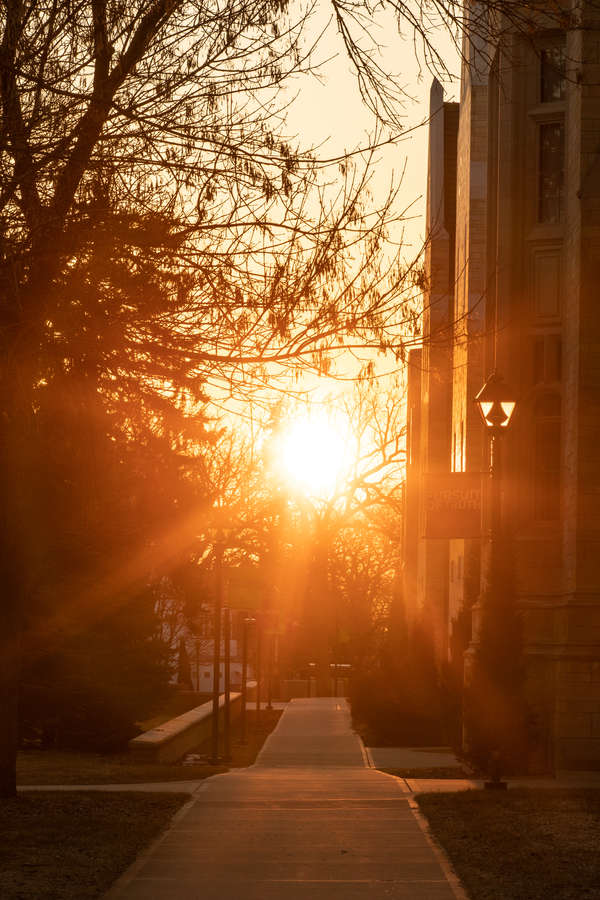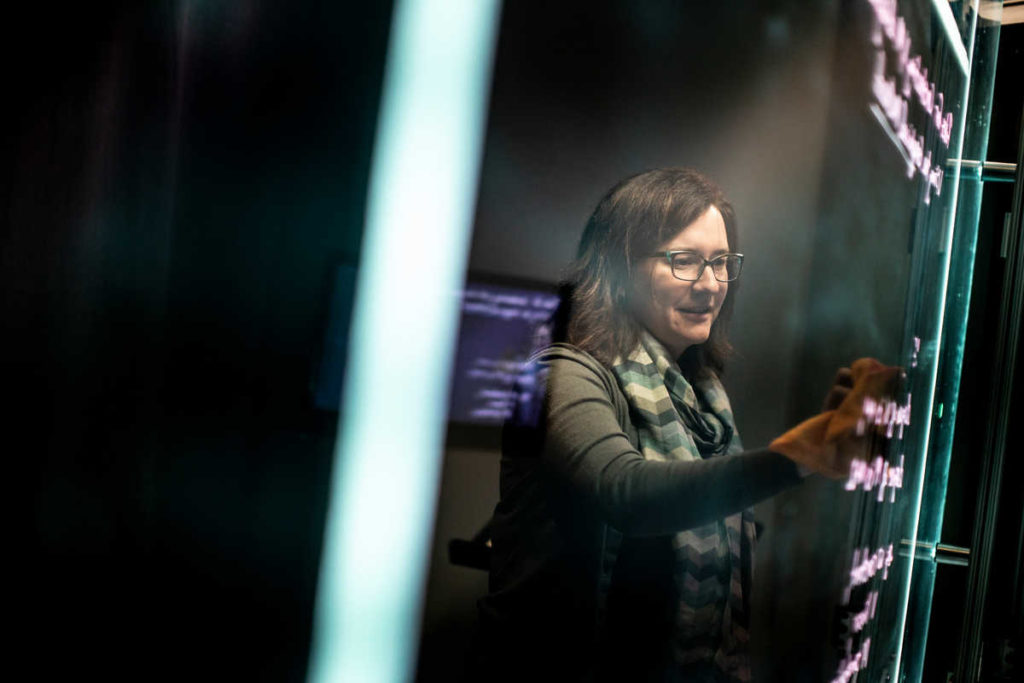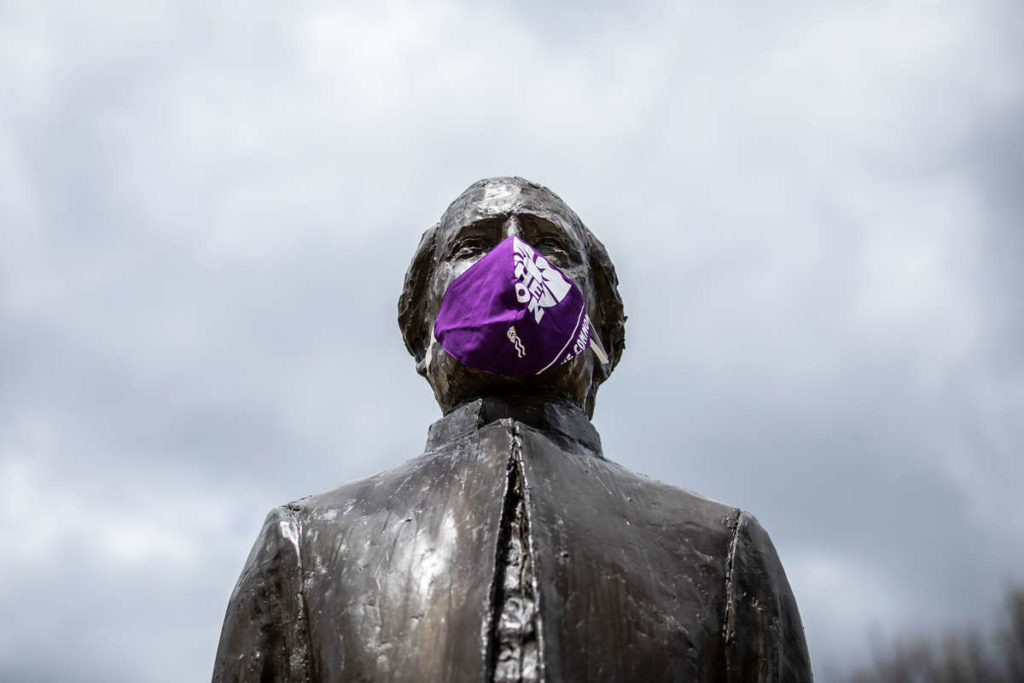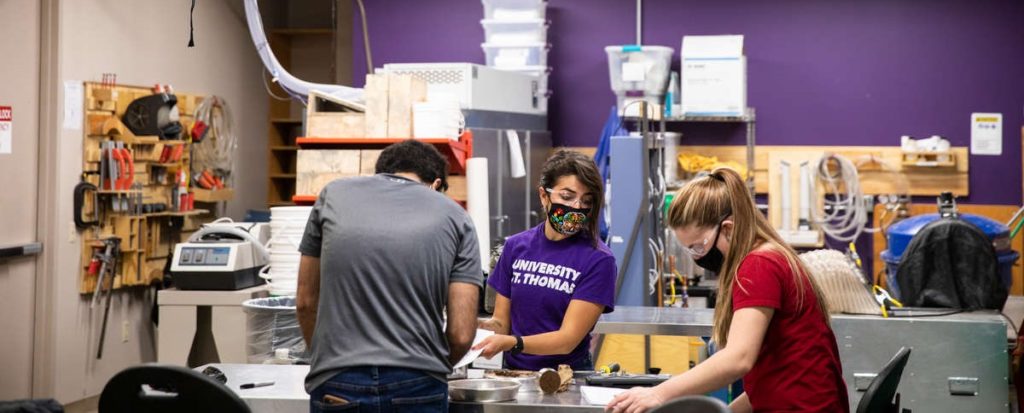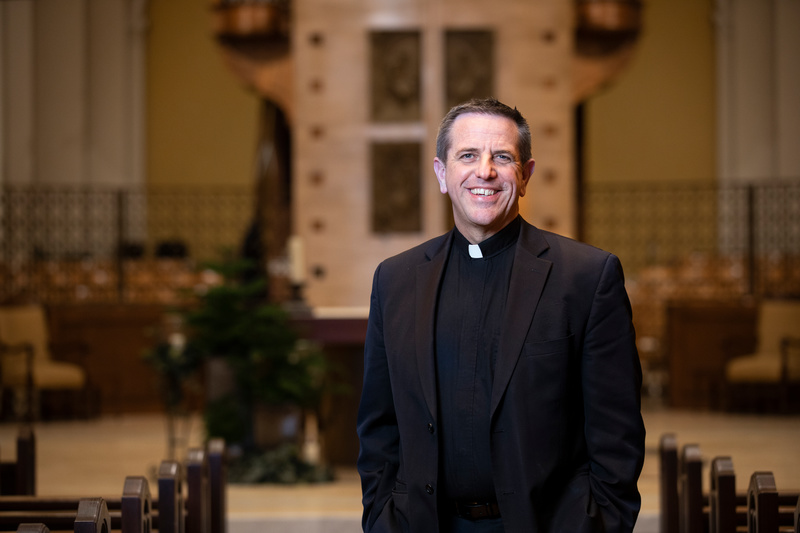Social distancing setups, more hand sanitizing stations, disinfecting kits in classrooms and a wider variety of instruction methods will be among the noticeable differences St. Thomas community members see when they return to campus this summer and fall. These measures are outlined in the university’s COVID-19 Preparedness Plan, which was completed earlier this week and announced in an email from President Julie Sullivan.
But the biggest change may not be any of the physical measures in place – instead, it may be a shift outlined on Page 11 of the 30-page document: “In the past, students and employees may have come to campus while sick intending to ‘tough it out’ … Going forward we must build a new culture in which anyone feeling sick stays home to protect fellow community members.”
“The success of this plan requires both changes in campus operations and behavior change from our community members,” Sullivan wrote in her email announcing the plan’s completion.
Other behavioral changes include keeping six-foot distances, avoiding large gatherings and wearing a mask or other face covering.
The plan was developed by the University Action and Response Team (UART), which guided St. Thomas’ unprecedented shift to online learning in March as the COVID-19 pandemic hit the U.S. UART incorporated input from all corners of the university into the plan, which was reviewed by a group of outside health experts before being presented to the community. UART released the plan this week by incorporating input following two community Town Hall events in June, where community members offered comments and suggestions, as well as questions.
“While we certainly cannot control the COVID-19 virus, I am confident that our plan, which includes recommendations gathered from stakeholders both on and off campus, will help protect and the health and safety of the university community as we conduct the essential work of educating our St. Thomas students,” Sullivan wrote.
Plan highlights include:
- A phased reopening of campus buildings that will progress throughout the summer, culminating with regular hours resuming in August. To start, community members will be required to access buildings by swiping their St. Thomas identification cards.
- Individual units working with supervisors, department chairs, deans and senior leadership to determine when and how employees will return to campus. Accommodations will be made as needed for employees who are in high-risk groups or may not be comfortable coming to campus right away. For the time being, though, employees who can work from home are expected to do so.
- A blend of fully in-person, mixed-mode and fully online course delivery options; course delivery modes will be driven by faculty, student and program needs, as well as by classroom capacities.
- Social distancing measures such as floor and table markings, revised room capacity limits, less furniture and the continued use of Zoom meeting technology; these measures will apply to all classrooms, dining facilities, residence halls, offices, athletic and recreation facilities and worship facilities.
- A policy that requires all community members to wear masks or other face coverings in the presence of others to prevent the spread of the virus (with accommodations for those who are unable to tolerate masks due to health reasons). Masks will not be required in certain situations (such as students alone in their residence hall rooms or study areas, employees alone in their offices, community members using cardio equipment in workout facilities, etc.).
- New cleaning protocols consistent with the Centers for Disease Control and Prevention and Minnesota Department of Health (MDH) guidance to routinely clean and disinfect high-touch areas. Self-disinfecting stations will also be available throughout campus to allow employees to wipe down surfaces after use.
- Expectations for all community members to self-screen daily before coming to campus, and stay home if they are experiencing any symptoms.
- Testing and contact tracing processes being led by the Center for Well-Being (in close collaboration with local partners, including the MDH) to detect confirmed cases and mitigate the virus’ spread; spaces also have been identified for resident students to isolate and quarantine themselves, if needed.
“All of these efforts, if embraced and followed, will help us respond to and contain the virus,” Sullivan said in the letter.
The plan can be viewed publicly on St. Thomas’ website here.
